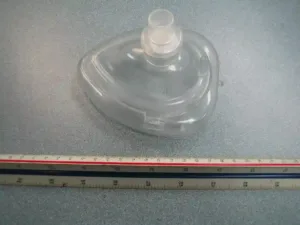Participants enrolled in CPR and AED training will learn to handle a variety of complications when doing cardiopulmonary resuscitation (CPR). One of the most likely complication to occur when doing CPR is vomiting. Most victims vomit during or after a rescue. Vomit is full of acids, and if they go down the windpipe (trachea) and into the lungs, it will be hard, if not impossible, to resuscitate the victim. This is why it is vital for rescuers to have a strong understanding of how to cope with a victim that vomits during or after resuscitation or CPR. Participants should be aware of and have knowledge pertaining to the use of barrier devices such as bag-valve masks and pocket masks.
Candidates need to have a strong understanding of disease transmission and the preventative measures especially when the possibility of vomiting may arise. The material posted on this page is for information purposes only. To learn to handle CPR complications such as vomiting take a first aid and / or CPR course through a credible “hands-on” provider (link is to our provider in Thunder Bay).
To appropriately and effectively cope with a vomiting victim rescuers must:
-
Candidates will learn to use Pocket Masks to prevent fluid transfer during vomiting. Be prepared to react to any vomiting event quickly.
- Turn the victim immediately, to position the body to allow fluids to drain. Rescuers need to be conscious of any possible suspected spinal injuries and handle the patient accordingly. Some effective positions for effectively removing vomit from a victim are:
- The H.A.I.N.E.S. position.
- The recovery position.
- The 3/4 prone position.
- Turning the victims head.
Vomiting is deemed as a sign of life so rescuers need to re-assess the patients vitals after the vomiting episode has ended. It is likely that the patient will vomit if he or she will recover from the event or will vomit after the patient regains consciousness. Rescuers can re-assess victims while they are in some of the above posted positions.
To learn more information and to learn hands-on training in coping with vomiting victims enroll into a first aid and/or CPR course through a credible provider.

